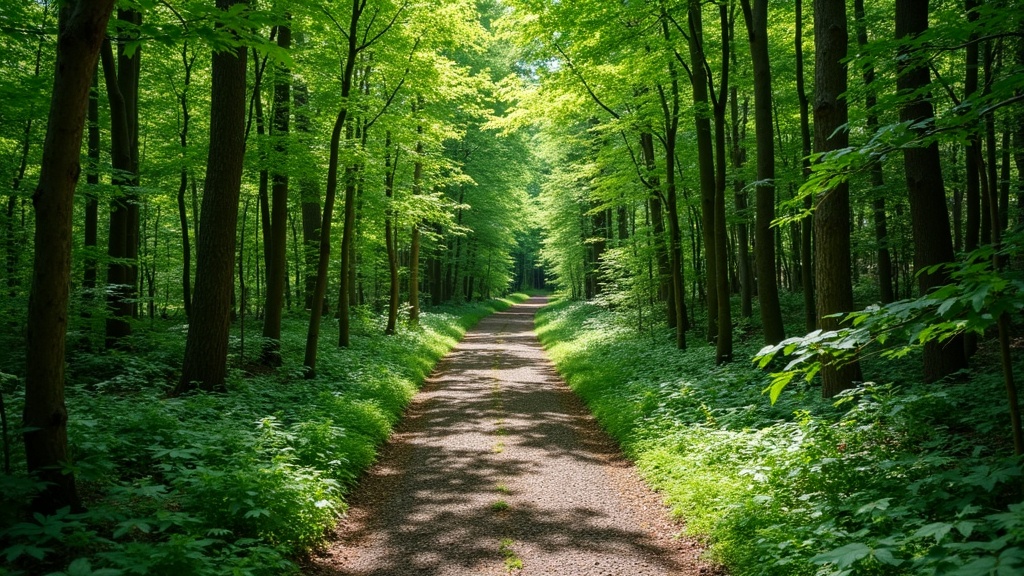Leave no trace – Responsible hiking
Hiking through the wilderness offers a real sense of freedom and connection with nature you just can’t find anywhere else. Exploring new trails or climbing up your favourite mountain peak can be super refreshing, but there’s a responsibility that comes with each step. Practicing responsible hiking isn’t difficult, and it makes a big difference for the outdoors and for everyone who shares those same wild spaces. I’m breaking down the “leave no trace” principles so your next hike isn’t just memorable, but as low-impact as possible.
Why Responsible Hiking Matters
The popularity of hiking has grown fast in recent years, and more people on trails means more wear and tear on landscapes. I’ve seen trails get eroded and natural areas struggle to bounce back from heavy foot traffic, stray rubbish, or people wandering off the path. Each small impact adds up, so building good hiking habits helps keep those wild spaces eye-catching and accessible for the next adventure.
Irresponsible hiking can damage sensitive plants, disturb wildlife, and even contribute to water pollution. Practicing “leave no trace” is very important to keep trails clean, preserve habitats, and ensure everyone gets to enjoy the outdoors in the future. Hiking with these tips in mind isn’t just about following rules; it makes the whole experience more rewarding and preserves what we love.
Leave No Trace Principles for Hikers
The “leave no trace” idea focuses on minimizing your impact, and it covers everything from packing your snacks to choosing where you step. Here are the basics I always stick with:
- Pack out everything you bring in: Don’t leave any rubbish, food scraps, or gear behind, even if it’s biodegradable (even apples, bananas, or oranges). Bringing a small bag for waste helps you keep track.
- Stick to marked paths to prevent erosion: Walking on established trails keeps the surrounding plants healthy and stops the creation of damaging “social trails.” Sometimes, even a shortcut that looks harmless can cause major trouble down the line.
- Avoid disturbing wildlife and plant life: Watch animals from a distance, let them do their thing, and don’t pick plants or move rocks around. A hands-off approach is usually best for keeping the natural balance.
- Dispose of human waste responsibly: There aren’t any toilets on the mountains, so use your walking pole to dig a hole at least 6-8 (20 com) inches deep and 150 feet (50 metres) away from water, trails, and campsites. Waste takes longer to break down the higher you are, so if it’s possible try and go when you are near the start.
Packing and Planning Ahead
Good planning makes it much easier to follow leave no trace practices. Before leaving home, I go through a quick checklist to help make sure I’m set for a responsible hike:
- Bring reusable containers and bottles: Keeping single-use plastics out of nature is a simple fix that pays off big.
- Use resealable snack bags: Super convenient for transporting snacks, and they keep trash sealed up for carrying out later.
- Carry a lightweight trash bag: I toss one in my backpack to carry out my own waste and pick up any litter I spot along the way. Every bit helps, even if it seems small.
- Check trail rules and conditions: Some parks or areas may have special restrictions to protect wildlife or sensitive plants. It’s always smart to check before heading out.
Spending just a few extra minutes planning smooths the way for a better hike. You won’t be surprised by trail conditions or rules, and you’ll be prepared to keep your adventure as low-impact as possible.
Staying on Marked Trails
It might be tempting to wander off for that perfect view or to take a shortcut, but staying on designated paths is essential. Trails are built to concentrate foot traffic on more durable ground, helping prevent erosion and reducing harm to delicate living things nearby.
I’ve seen what happens when people cut corners or blaze their own paths. Grassroots trails appear quickly and often become muddy messes after rain, making it tough for native plants to recover. Even if the ground seems sturdy, a few hikers can quickly turn it into a problem area. Whenever I hike, I do my best to keep my boots right on the path, no matter how rocky or muddy it gets.
Handling Waste: Pack It Out and Go Responsibly
One habit that truly shows respect for nature is packing out everything you bring in. Snack wrappers, fruit peels, bottles, tissues—they all go with you. Even items labeled “compostable” or “biodegradable” can stick around for months or years; plus, they’re just not part of the local ecology.
- Food scraps: Even if animals might eat them, feeding wildlife is a bad idea as it creates dependency and could make them sick.
- Rubbish: Any little bits of plastic or foil, snack packaging, you name it—if you bring it, take it back.
It may feel odd at first, but packing out everything, including toilet paper and tissues, is the best way to protect the environment and future visitors’ experience.
Wildlife and Plant Life: Respect Their Space
The magic of hiking lies in stumbling upon a deer, or hearing a chorus of birds nearby. These moments are unforgettable, and they happen most often if we avoid startling or interfering with wildlife. I stick to using binoculars to get a closer look and keep a respectful distance at all times.
Keeping noise low, avoiding feeding animals, and not trying to touch or follow them are great habits to have on the trail. Even moving rocks or picking wildflowers can upset the ecosystem. Every animal and plant has a purpose—leaving them alone is the safest way to help nature.
Extra Tips for Crowded Trails
Popular hiking spots often get crowded, especially on weekends or during holidays. Here are ways to make sure everyone has a good time and nature stays protected:
- Yield the trail kindly: Step aside for uphill hikers or those moving faster; don’t block the path when you stop for breaks.
- Keep noise low: Enjoy your chats, but keep music to headphones (or skip it). Let others get a feel for nature’s natural sounds. KEEP YOUR STEREO OFF!
- Park only in marked spaces: Parking on meadows or road shoulders can crush plants and stretch the impact farther.
Troubleshooting Tricky Situations
Now and then, you’ll stumble upon more litter than you can carry out or see someone breaking the rules. Here’s my approach:
- If others aren’t following the guidelines: A friendly reminder helps, but leading by example is usually even more effective. Most folks appreciate a gentle nudge in the right direction.
- If you encounter a big mess: Pick up what you safely can. It’s frustrating, but if everyone walks by and does nothing, the waste will remain.
Responsible Hiking Gear Checklist
The right gear helps you stick to responsible hiking habits without adding much weight or fuss. My essentials include:
- Reusable water bottle and snacks
- Small rubbish bag (or stuff sack) for collecting waste
- Map or hiking app for keeping to the trail
- Hand sanitizer and a lightweight first-aid kit
You might also add a portable charger for your phone, a headlamp in case you’re out later than planned, and sun protection. These little additions make your adventure safer and more enjoyable.
Common Questions About Leave No Trace Hiking
How do I handle pet waste on the trail?
Pack waste bags for your pet and carry them out with your rubbish. If allowed, you can bury pet waste just like human waste (using the same guidelines).
Is it okay to pick wildflowers or collect rocks?
It’s better to leave natural things where you find them. Picking flowers or taking rocks away removes shelter and food sources for small insects and can change the look of the landscape.
What if I need to wash dishes or myself?
Step at least 200 feet from lakes or streams to wash up. Use a small amount of ecofriendly soap, filter out big food bits, and scatter your rinse water so soil can filter it. Pack out food particles in a zip bag with your trash.
Wrapping Up: Setting a Good Example in the Outdoors
Building these habits into your routine makes hiking simpler, more enjoyable, and definitely better for the environment. By planning ahead, sticking to trails, packing out all waste, being mindful of wildlife and water sources, and sharing leave no trace values, you’ll know you’re making a positive mark. That’s how hiking remains safe, fun, and wild for everyone who comes next—and for wild places themselves.

